
What is Cognac made of?
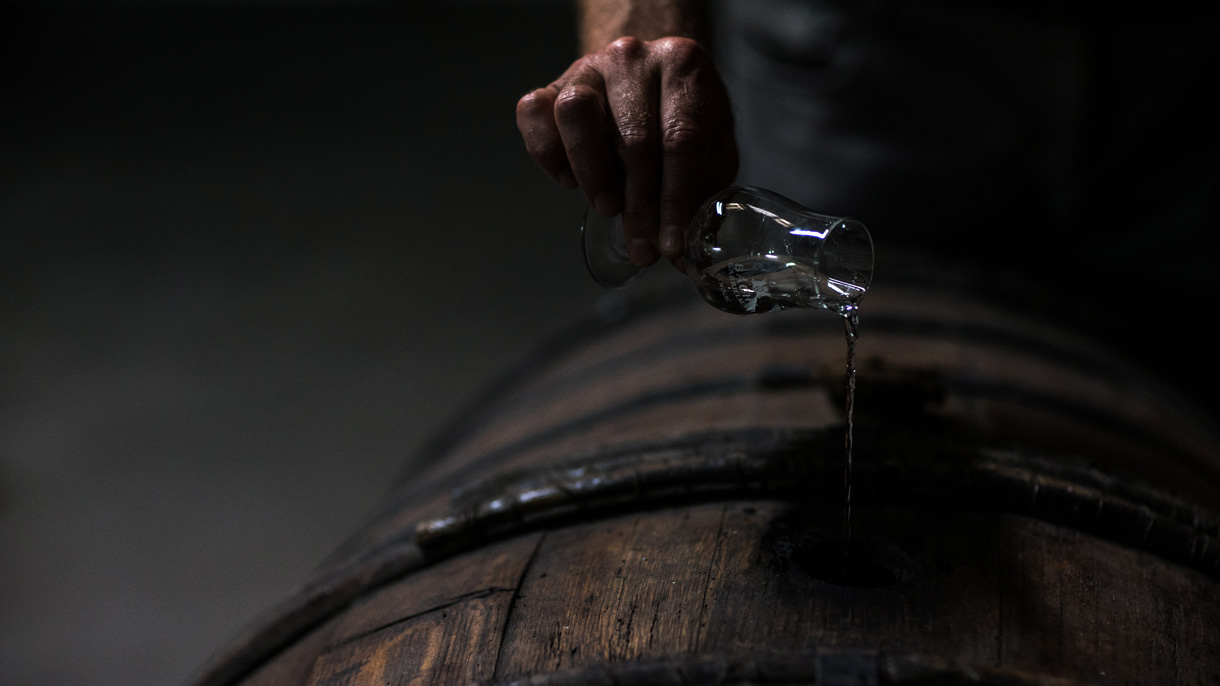
What is Cognac made of?
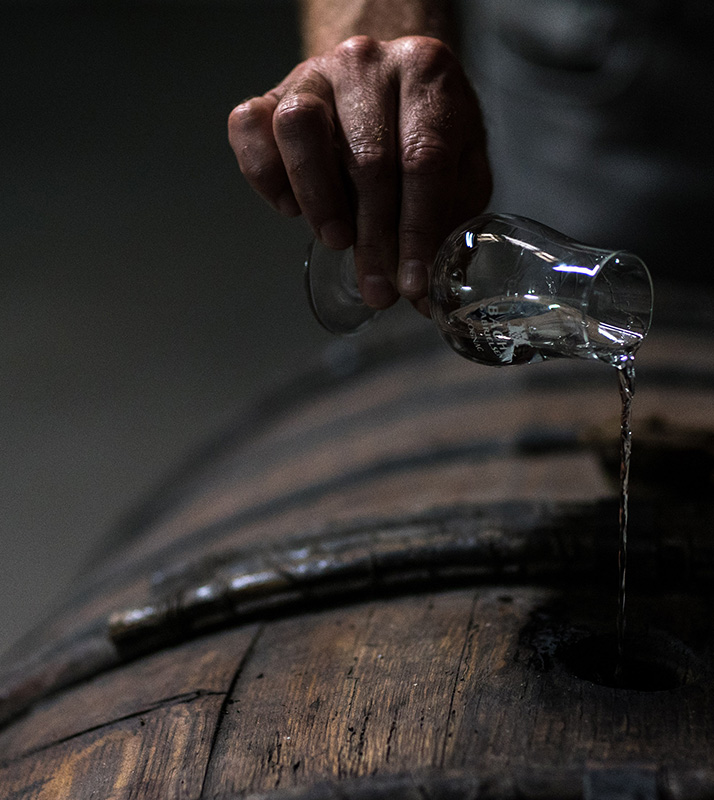
What is Cognac made of?
What is Cognac?
There’s probably never been another drink in the history of the world that causes as much confusion as Cognac. What exactly is it? How is Cognac made? What’s it made of?
The team at Cognac Expert is here to provide you with the definitive guide to all things Cognac. Within this article we are going to take you through the fundamentals of the liquid gold, covering the following:
- The starting point of Cognac: the grapes
- Eau-de-vie and how to make Cognac
- Cognac ageing
- Cognac blending
- Cognac coloring
- Cognac vs. Brandy
- Cognac vs. Whiskey
- Cognac vs. Armagnac
- FAQs
Within each of these topics, we will also recommend a number of other articles that will allow you to delve even deeper into the particular subject.
So read, digest, and prepare to flaunt your new found Cognac knowledge to friends, peers and associates.
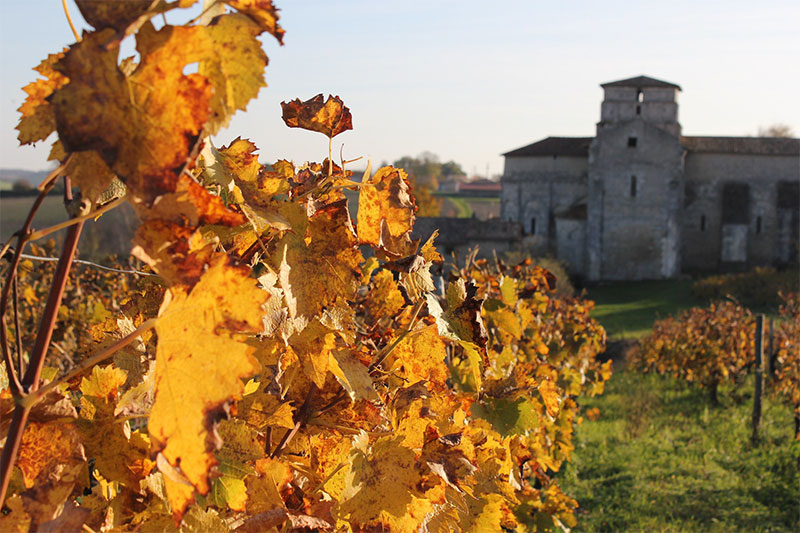
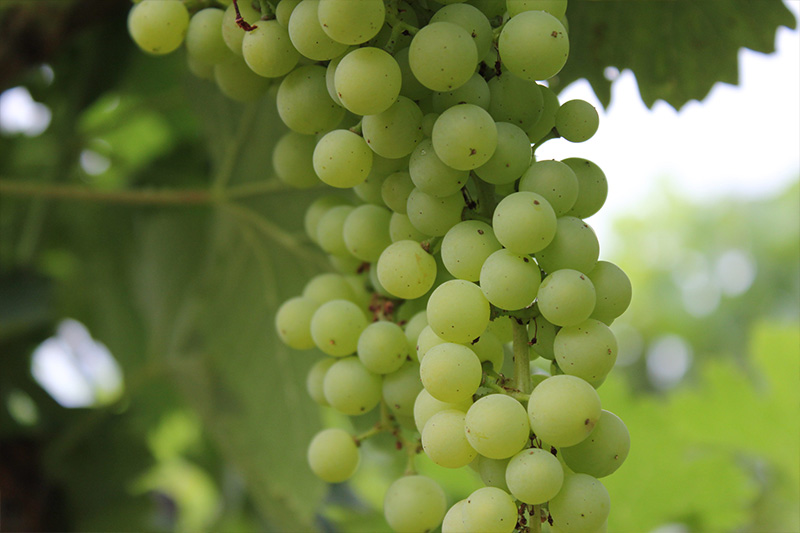
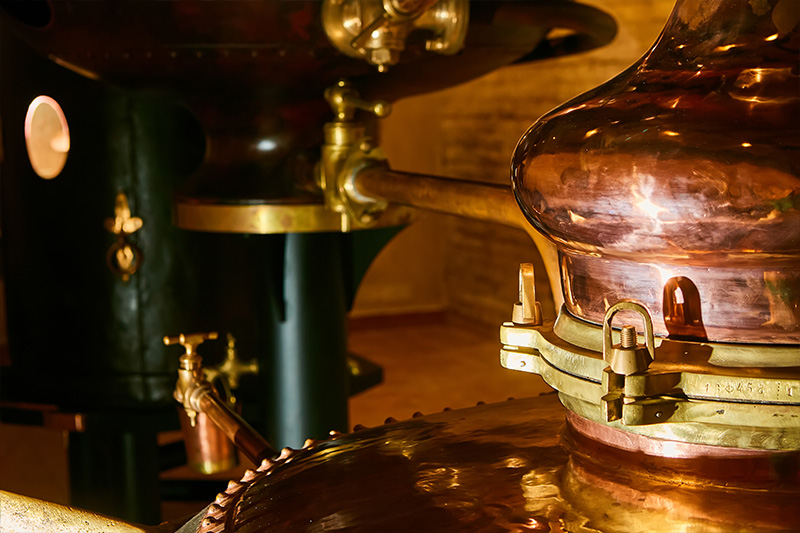
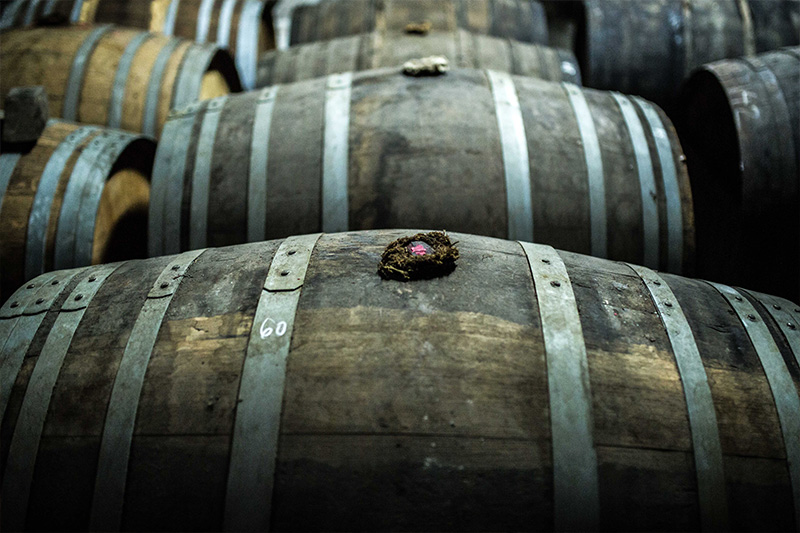
Cognac Grapes
Cognac is made of white grapes that are grown in the clearly defined areas of the Cognac growing region, the AOC. The sour, acidic wine that eventually becomes Cognac, is typically obtained from three different types of white grapes.
What is Cognac made from?
Cognac is made from grapes, but not just any old grape. White grapes, and strictly only white grapes that are grown in the Cognac growing region.
Most people are aware that when you ferment the juice of grapes, the result is wine. However, the grapes grown in Cognac do not produce the kind of wine you’d want to drink. Far from it. In order to make a good quality Cognac you need sour, acidic wine. This is because the acid levels and alcohol levels of around 9-10% help to preserve the wonderful floral, fruit aromas and flavors of the grapes that are so important when it comes to making Cognac.
So what grapes are used for Cognac?
The sour, acidic wine that eventually becomes Cognac, is typically obtained from three different types of white grapes: Ugni Blanc (or Trebbiano), Folle Blanche and Colombard. These vines produce a fruit that gives a very light, acidic wine, perfect for distilling into the raw component of Cognac; eau-de-vie. Cognac has to be made from at least 90% eau-de-vie from these grapes. The other 10% can come from other grape varieties such as Montlis, Semillon, Select, Meslier St-Francois, Jurancon Blanc or Folignan.
Prior to 1875, the majority of Cognac vineyards were planted with Folle Blanche, Colombard and Montils grape varieties. However, they were tragically decimated by a pest called Phylloxera vastartrix. Following this, the majority of the region was re-planted with the more resilient grape variety of Ugni Blanc. Today the region is facing new challenges in grape cultivation: climate change is resulting in higher temperatures year after year, leading to less acidic and higher sugar content grapes which are not suitable for good quality Cognac. You can read more about this in our article, Cognac and Climate Change.

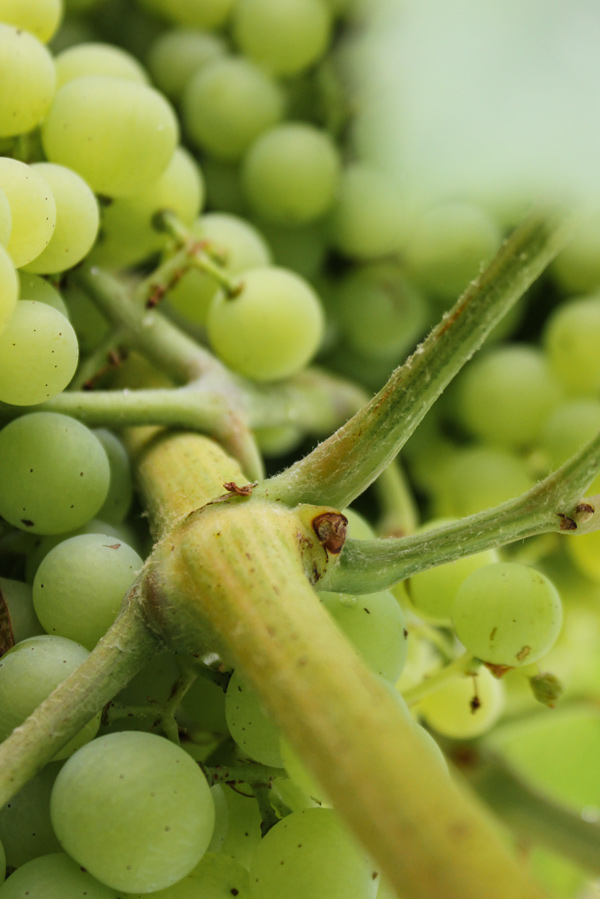
1. Ugni Blanc
The Ugni Blanc grape variety currently makes up more than 98% of Cognac vineyards across around 100,000 hectares. It is a great variety to farm as it delivers relatively high quantities, with the winegrower being able to produce about 100-200 hectolitres for hectare.
The Ugni Blanc grapes are rather sensitive to winter frosts and so the plant requires mild climates. With Cognac being a northern wine area, the wine is more acidic and low in alcohol, this coupled with its high yield makes it ideal for distillation to cognac. The high acidity ensures that Ugni Blanc cognac has a good natural aging potential and produces delicate, floral flavors and aromas.
For a long period of time the grape has also been used to create aromatic and dry white wines, classified as Vins de Pays. When cultivated more in the countryside, the wine becomes more balanced and neutral. In Provence, Ugni Blanc wines are smooth with complex notes of pine resin, quince and lemon.
The Ugni Blanc grape variety is better known under its Italian name, Trebbiano and originates from the region of Tuscany. It can also be found under a number of other names in other French regions. The grape goes by the name “Saint Emillion” in Cognac and across the country it has also been called:
Chatar, Cadillac, Cadillate, Castillonne, Muscadet (Gironde), Clairette à grains ronds, Clairette ronde (Provence), Buan et Beou, Queue de Renard, Roussan (Alpes Maritimes), Gredelin (Vaucluse), Rossola (Corse).
Around the world names for the Ugni Blanc variety also include: Trebbiano Toscano, Trebbiano, Trebbiano Fiorentino, Procacino, Malvasia lunga, Buzetto, Campolese, Albanella (Italy), Talia, Branquinta, Douradinha (Portugal), White Hermitage (Australia) and Juni blan (Croatia).
The Ugni Blanc grape is not very well known by name in France, but is in fact one of the top varieties and cultivated in several regions including; Midi, Charentes, Gers, Lot-et-Garonne, Landes, Entre-deux-mers, Bouches-du-Rhônes, Loire, Longuedoc, Provence and Corse.
Close to Angoulême, there is a Ugni Blanc Conservatorium called Lycée agricole de L’Oisellerie. The genetic heritage of the grapes is conserved here, after experts gathered the oldest vine plants in Charente and South of France. The plants are also cloned here in order to protect their diversity.
Ugni Blanc is not only found in France, but also cultivated across the globe and ranks as the fourth most used variety worldwide. It is grown in Italy, Bulgaria, Mexico, Australia, Greece, South Africa, California, Argentina, India, Chile, Romania, Russia, Brazil and others.
2. Folle Blanche
Folle Blanche is a classic grape that helps make cognac and armagnac, it was traditionally the most popular grape used in cognac production. However in the region of Cognac, the Folle Blanche variety is now often overlooked for the Ugni Blanc grape despite the light, fresh and acidic wine it produces. This is due to the fact that, unfortunately, this traditionally dominant grape was one of the primary victims of the phylloxera crisis and so is now more sensitive to disease.
In France the Folle Blanche grape represents less than 1% of vines planted, however it remains a unique grape that produces well-balanced wine with strong aromas which are released through distillation. The average Folle Blanche grape consists of 17% sugar, which will not produce more than 8.5% of alcohol by weight in the wine. This is regarded as a light wine in terms of its alcoholic content.
Like both Ugni Blanc and Colombard, gives high quantities of grape juice and develops early in the spring. In Loire and Vendée the variety also goes by the name Gros Plant and in Gers it is called Piquepoul.
The origin of the name Folle Blanche, comes from the French word ‘fou’ meaning ‘mad’. The vine’s individual grapes are of normal size and do not differ a lot from the other varieties. There is a theory that Folle Blanche is practically the same variety of grape that is cultivated at the banks of the Rhine and Wurtemburg. The color of the grape when ripe is sort of yellow green and the shape is almost round. Sometimes the grapes are also called Folle Jaune, and when greener, Folle verte.
Despite its limited presence in the region, some Cognac Houses, such as Godet Cognac, are striving to bring back traditional and almost forgotten grape varieties such as Folle Blanche. You can read more about this in our article: 3 Single Grape Cognacs by Godet.

3. Colombard
The Colombard grape is one of the oldest surviving grapes of Charente, having been produced originally as a cross between Gouais and Chenin Blanc. Similarly to the other two grape varieties it is very acidic with low sugar levels but it holds a higher alcohol content, for this reason Ugni Blanc and Folle Blanche are preferred for the distillation process.
Colombard grapes are cultivated in Western France and in other, dryer areas. Since the 1990’s the use of Colombard has fallen but can still be found in some regions including Gironde, Landes, Lot-et-Garonne, Loire-Atlantique and of course the Cognac region of Charente.
Areas of California, Texas, South Africa, Australia, Mexico and Israel also cultivate the Colombard vine. Of course, it goes by different names depending on the location within which it is found: Colombier (in Gironde), Colombié, Queue tendre, Chabrier vert, Donne verte, Gros blanc roux, Blanc Emery, Bon Blanc, Pied tendre, Guenille, Blanquette (Tarn-et-Garonne). In South Africa the variety is called Colombar and in Canada, Chile and Israel, French Colombard.
The Colombard grape is popular in California and Texas due to its ability to retain acidity in hot, dry environments. It was the most widely planted grape in the state of California until the 1990’s. The success of the simple, but fresh white wines made here, resulted in an upsurge in fortune for the variety in Southern France.
Other grapes used in Cognac
Although the previously mentioned three varieties are the most popular Cognac wine grapes and by law must make up 90% of a Cognac, the other 10% can contain an array of grapes grown in the Charente region. These include: Le Jurancon, Blanc-Rame, Balzac Blanc, Chalosse, Saint-Pierre, Bouilleaud, Saint-Rabier, Balzac Noir and Petit Noir.

What happens to the grapes?
So, the appropriate vines have been planted, maintained and protected from diseases. It takes four to five years for a newly planted vine to produce grapes of a quality suitable for Cognac production. The grapes must then be harvested, which today is predominantly done mechanically, although many in the region believe that harvesting by hand adds to the quality of Cognac. The harvest in the Cognac region usually starts by the end of September and generally lasts for about three weeks. Once this is complete, the grapes are pressed. The juice that is pressed from the grapes is allowed to ferment for several weeks, with no additives, turning it into wine.
Trends in grape cultivation for Cognac
The popularity of Cognac has been growing substantially all around the world, particularly within the US and Asian markets. Whilst this is something to be celebrated, it is also resulting in the land where the grapes are grown significantly rising in price. The meteoric rise in the popularity of Cognac also means that the existing viticulturists are struggling to keep up with demand and are calling for an expansion of Cognac vineyards. If you want to help supply the world with liquid gold and fancy trying your hand at grape cultivation, read our article: How to buy a Cognac vineyard.
We have seen a growing demand for organic Cognac over the years, and it seems to be particularly women in the industry who are rising to the challenge of organic cultivation. However, despite the rise in popularity organic cognac growers are still a minority in the region. If you would like to support those who are investing their time, money and skills into the practice, check out these 10 Organic Cognac Producers.
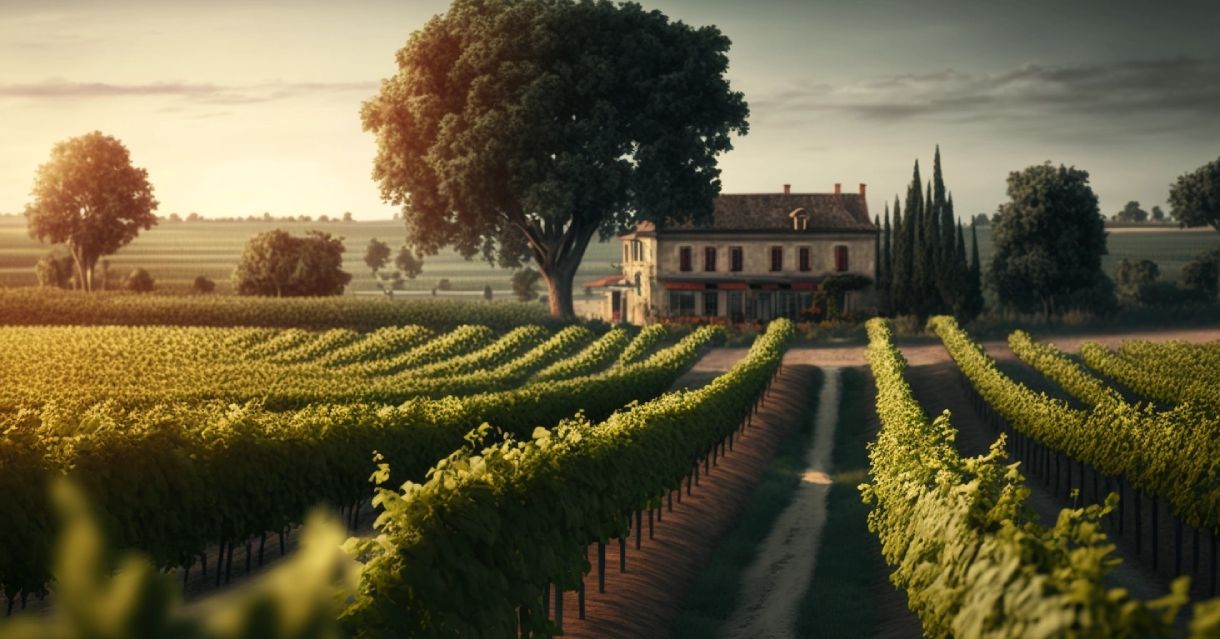
Eau-de-vie and double distillation Cognac
Eau-de-vie means brandy. It is what is created from the double distillation of the wine but it is far less in quantity and much more concentrated than the original wine.
Is it true that you need bad wines to produce good cognac?
The wine that is supposed to be used for cognac is called Vin de Chaudière. It’s not the best wine in the world - it’s actually quite a lousy wine to drink. The reason for this being that the wine should be low in alcohol, only around 9%. At the same time, the wine should not be too intense in terms of aromas and taste. This is necessary for producing good eau-de-vie.
The wine used to make Cognac also needs to be acidic so that the chemical reactions work better. The lower the alcohol degree, the better the concentration of aromas. The wines dedicated to cognac production are relatively natural as the winemakers do not add anything superficial to the process, nothing to make them sweeter, more balanced, or protect them from bacteria. This is because it is prohibited in the laws for cognac production, the grapes must be totally clean and pure with no additives whatsoever. It would create an aroma one would notice in the eau-de-vie afterward as it becomes so concentrated.



Images from Jean-Luc Pasquet
How does cognac distilling work and is cognac made from wine?
As previously mentioned, before the distillation process begins Cognac starts its journey as a wine that is allowed to ferment for several weeks. The wine used for distillation is usually of between 8 and 10% alcohol strength. The Cognac distillation process is non-stop, twenty-four hours a day and if you visit a distillery during distillation, do not be surprised to find beds, televisions and other domestic items installed, as many distillers stay there throughout the whole process.

Traditionally shaped copper stills, also known as "Alambic Charentais"
Distillation takes place in traditionally shaped copper stills, also known as “Alambic Charentais” or “alembic”, depending on the language. The Alambic Charentais consists of three elements: chaudiere (boiler), chapiteau (condenser) and chauffe-vin (wine-warmer). The third element is optional and is used, primarily, to save energy. The boiler can be heated by gas, coal, wood or oil, although the majority use gas today, but there are still a few, like Guy Gambert, who use wood. In most cases, the condenser is onion-shaped and it has a swan-necked pipe (col de cygne) that connects it with the boiler. The design and dimensions of the pot stills are legally controlled.

The making of Camus Cognac
The wine-warmer is a device that does exactly what its name indicates: it pre-warms the wine as it moves from vat to boiler. The process of distilling cognac has two parts (thus the term “double distillation”). In the first, a raw eau-de-vie known as brouillis is produced. In the second, known as bonne chauffe, only the Coeur (heart) is saved and the resulting tete (head) and tail queue (tail) are either discarded or re-processed. This double distillation is a legal requirement and not the choice of the Cognac producer. The first distillation lasts about eight to ten hours, the second twelve to fourteen hours. The clear liquid, eau-de-vie, which is the end product of distillation, is piped directly into wooden casks. There are many regulations and laws specifying sizes, volumes and distillation processes. Although in 2011 the Cognac distilling laws were amended to allow smaller distillers to work under a less constraining regime.
So, the basic explanation for distillation is: you heat a liquid and it starts evaporating. If the vapors then get in contact with a cold surface, they condensate. In the end, it is the distiller’s art and science that makes one eau-de-vie different from another. If you’re interested in knowing more about Cognac distillation, check out these great videos regarding the process - Cognac Distillation: Birth of the Spirit and The Distillers.


What is eau-de-vie in Cognac?
You might be wondering, what does eau de vie mean? The simple answer is, translated from French, it means brandy. And as mentioned above, it is what is created from the double distillation of the wine but it is far less in quantity and much more concentrated than the original wine.
The eau-de-vie, at this moment, is completely clear, it has a fantastic aroma, reminding us of vineyards after the rain, a sharp taste and an alcohol content of about seventy percent. It is this eau-de-vie, the end product of distillation, that is put into wooden casks.
In theory the distillation of Cognac all sounds quite easy, doesn’t it? However, there are so many different distilling techniques; rum, gin or whisky distillation works very differently. Every brandy from Obstler to Armagnac to Spanish brandies goes through a different process. The Alembic Charentais (the pot still from Charente) is very different to others, such as the Armagnac pot stills. Spirits are all distilled in a slightly different way.

How is Cognac aged?
One of the ‘rules’ for making Cognac is the type of oak used to make these aging barrels. This can be one of only two types, Limousin (Southwest France) or Tronçais (Burgundy).
In the story of Cognac, we have completed the stage of double distillation when the wine pressed from the grapes grown in the region is then heated in copper pot stills to create the product we call eau-de-vie.
The next chapter is when the eau-de-vie undergoes its aging, this takes place in oak barrels over many years and is where the fun really begins.
What is going on during the aging process?
The aging process of cognac takes place in oak barrels over many years. An important moment in the aging of cognac arrives sometime between five and eight years in the cask. The most noticeable results are in the aromas, in the flavor of vanilla that has become a fixture, and the color that has intensified, but the palate still needs more time in the cask.
It is during the next few years that the true character of cognac flourishes. The complexity of floral and fruity aromas develops, the color gets deeper and the taste becomes a real pleasure. When the cognac gets past its twenties, a noticeable change in taste becomes apparent as a result of the further breakdown of tannin, giving it a touch of natural sweetness. During aging, the cognac producer may move the eau-de-vie a number of times between different casks, a process that is tedious and thus practiced less and less.
Below: Jean Pasquet in his cellar (credit Jean-Luc Pasquet)

The Miracle of French Oak
One of the ‘rules’ for making cognac is the type of oak used to make these aging barrels. This can be one of only two types, Limousin or Tronçais. Limousin oak comes from the forests of the same-named region in Southwest France and similarly, Tronçais oak comes from the forests in Tronçais, near Burgundy.
There’s one major difference between these two types of oak and that’s that Limousin oak has much wider grains compared to its Tronçais cousin. This allows the liquid within to penetrate the oak further and consequently, the aging process happens more quickly. Of course, the word ‘quickly’ has to be taken into context, because when it comes to cognac, nothing happens fast. Another important point to note is that when a barrel is first made, it undergoes a process known as toasting or ‘bousinage’, a procedure that literally chars the wood. This can be carried out to a greater or lesser extent and is done to remove any harmful tannins in the wood.
Cognac barrels are split into three categories. Those aged between one and four years in age are called, ‘Meuresmeur’. The name for barrels aged between four and ten years is ‘Barriques Rouges’, (red barrels), and those over this age are called ‘Vielles’.
So, we have established that the cognac aging requirements specify that the process must take place within either French Limousin oak barrels or Tronçais oak barrels. However, although the primary aging must meet these requirements, it is now permitted for cognac to undergo a second maturation or a ‘finishing’ in casks composed of different oaks.
Where does aging take place?
A chais, or ageing warehouse as it is known in English, is a building where the cognac producer stores the barrels for aging and produces the final product. The location of the chais is important because of the need for humidity, which affects the aging of cognac. Some producers such as Hine, Delamain, Tiffon, Courvoisier, Navarre, Otard, and Hennessy Cognac prefer higher humidity and place their chais near the river whilst others span the river (Cognac Gautier). Other chais e.g. Giraud and Bouju, are in small valleys to take advantage of the prevailing micro-climate; and others experiment with multi-level chais where the lowest level is underground e.g. Paul Beau, Jean Laval. It is worth mentioning that, until recently, some Cognac producers shipped their casks to special warehouses along rivers in England to obtain the maximum humidity for their barrels, the expression “early landed” is associated with this aging technique. Although this is no longer practiced, the Delamain and Hine products of the “early landed” vintage era are of a very interesting quality. Check out this fascinating interview with A. De Fussigny regarding the River Charente and how it affects their aging process.
Old chais are buildings of a low height, while the modern ones are high structures built of metal. In the old chais everything is done manually, except for the walls which are blackened courtesy of Torula cognasiencis, a fungus that thrives on the humidity and vapors. Spiders’ webs are numerous (as these little creatures feed on the insects who, in turn, feed on the oak of the casks) and of course, unique aromas pervade the atmosphere.


The Angel’s Share
These unique aromas are the result of seasonally-changing temperatures in the chais, which contribute to the evaporation process. Every year, each chais loses about 3% of its cognac stock. Romantics call this “la part des anges” – the angel’s share – but the producers and their bankers have a rather different opinion.
Each cognac producer has a slightly different process when it comes to aging cognac. Some use brand new casks to get a newly distilled eau-de-vie to react immediately with the tannins, the length of this first reaction will vary between six and eighteen months. Others approach it in a gentler manner, by using casks that have already been acquainted with other eaux-de-vie, thus the tannins are less aggressive or some claim, more refined.
Cognac age requirements
The important point is that, by law, cognac must age in the casks for a minimum of two years, which causes some controversy in the industry. The people of the region are often referred to as les cagouillards (the snail-like) and they are thus known for their patience, as there is no way to hurry cognac. So while the eau-de-vie rests in the casks there is much happening but at a snail’s pace. The cognac absorbs tannin (resulting in color and taste development), the alcohol strength declines (by about one degree per year) and oxidation (its reaction with air) brings subtle changes to the chemical composition. The accepted wisdom in the region is that after fifty or so years in the cask, the Cognac reaches the end of its natural development and so at this point it must be transferred to glass bottles known as damejeannes (demijohns). As the significant economic demands on cognac producers are growing, it is very rare today to wait fifty years before commercializing a product. However, there are cognac houses, e.g. Frapin, Ragnaud-Sabourin, Martell and Remy Martin, who proudly guard the contents of their dame-jeannes. Often, real fortunes are stored in these glass bottles.
The age of cognac is what determines its quality and can be anything from a VSOP of two years of age, up to an Hors d’Age which is aged between 30 and 50 years, however there are cognacs that go well beyond this age requirement. You can find out more about the different cognac ages and classifications in our article: Cognac ages.
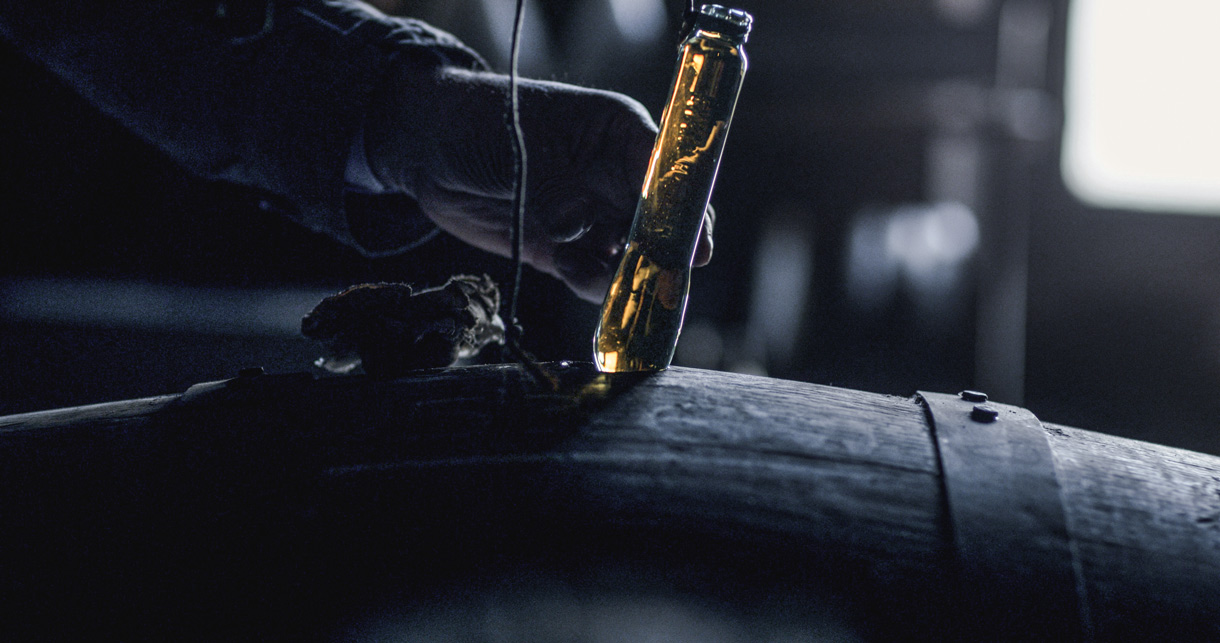
Defying nature
As in so many aspects of life, people want to accelerate certain natural processes. Cognac is no different, and some producers like to shorten the time of aging. To do so they use a process called boise. It is a simple process of adding oak shavings, either natural, or in liquid extract or powder form.
The change is rapid: color, taste and aroma quickly resemble an old Cognac but, in this instance, the old cliché that you cannot beat nature holds true. By using the boise process, the producer must also add sugar to balance the bitterness of the tannin. This process is legal and many use it to a varying degree; some make a small batch and then blend it in; some do it in larger quantities.
There is basically nothing wrong with such a Cognac, except it will lack the complexities that are unique to a naturally aged Cognac. All of this should not be confused with Cognacs that are naturally woody (confusingly, also “bois”‘), with no additives used to speed up their aging. Either style of Cognac can be spectacular and it is worth repeating here that Cognac is a very personal taste, but a taste that once acquired, is never forgotten.


Cognac blending
To blend or not to blend? That is the question. Blending is an art more than a science but, above all, it needs encyclopaedic knowledge of what is in the casks and how eaux-de-vie interact.
Cognac blending refers to the process of mixing at least two different eaux-de-vie together. These could be the product of two different vintages from the same vineyard or from different vineyards but the same year. You can also find cognacs from a single distillery, but this is still technically a blend as it will contain eaux-de-vie from multiple vineyards and of different ages even though they have all been distilled at the same site.
The art of blending is what makes cognac truly special, typically the better the quality of the cognac, the greater number of eaux-de-vie it is likely blended from. An XO cognac is usually blended from at least 150 different eaux-de-vie.
It is for this reason that blending requires an encyclopedic knowledge of what is in the casks and how eaux-de-vie interact. No wonder that the person in charge, the maître de chai (master of aging warehouse, or cellar master), spends some twenty years studying under another maître de chai. There are, of course, exceptions like Olivier Paultes at Cognac Frapin and now Hennessy Cognac; young, knowledgeable maîtres de chai who work magic with their Cognacs. Among many small Cognac producers, this knowledge is passed down from generation to generation.

Blending different crus
There are many producers who do not blend in the classical sense. This means they do not blend eaux-de-vie from different crus, so Grande Champagne is forever Grande Champagne and so on. What they might do is blend eaux-de-vie from the same cru but from a different year or different vineyard. The purity of the cru is preserved and, in most cases, such blending is very hard to detect! We also suggest that it is not a critical factor in assessing a single cru cognac. In all fairness, it needs to be mentioned that some old houses that still have pre-phyloxera eaux-de-vie do blend them into their top-of-the-range products. The distinction is important as these old eaux-de-vie were primarily made from Folle Blanche grapes, but geographically within the current definition of crus. In this category you will find Cognacs from, for example, Frapin and Ragnaud-Sabourin.
Blending with additives
Blending does not just refer to the combining of eaux-de-vie from varying crus and harvests, in some cases additives are blended into the Cognacs. A great majority of Cognac producers add any of the four, legally allowed, elements: distilled water, oak (boise), sugar and caramel. Some also use petites eaux which is simply an eau-de-vie whose strength has fallen below the required minimum of 40% volume. Distilled water is added throughout the ageing process simply to lower the alcohol volume. The minimum alcohol volume allowed is 40%, but there are some Cognac producers that sell their products in a range of 40% to 50%. Those who do are guided by the quality of the eaux-de-vie and in most cases these are Grande Champagne products. Among them are Forgeron, Bouju, Les Antiquaires du Cognac, Ragnaud-Sabourin and Leopold Gourmel.
The boise addition can be powdered oak, shavings or infusion, and it is added during the ageing to accelerate it and give the eaux-de-vie more of a tannin look (a very dark color) and taste. This process is very much the producer’s secret and very few will admit to it. The majority use this to blend an “oaky” eau-de-vie with other natural eaux-de-vie. But there are exceptions: Daniel Bouju, we believe, is the best at making a bois Cognac. His Cognac Royal (at 60% volume) and his Cognac Fut de Brut (at 50%) are unique – in a class of their own. As with all Cognacs, it is a question of personal taste, but when you try Daniel Bouju’s products, you will find magical aromas and tastes. Do not forget to add an ice cube and the explosion of aromas will take you on an unforgettable journey. We believe that there is nothing artificial in the process of using boise to age Cognac, but it must be done well.
Sugar is added to adjust the taste, and to hide the aggressiveness of young eaux-de-vie. Up to 3% of the volume can be added. It is also done to manipulate the taste for certain markets: Japan and Germany, for example. In general, this practice is widespread and mostly applies to VS and VSOP qualities. Once again it is your taste buds that will decide acceptance or rejection of such a product, but among the outstanding products on the market in this category are Rémi Lander VSOP, Larsen VS, Jean-Marie Verger VS and Laval Consul.
Caramel is added to adjust the color of the eau-de-vie. Because it is almost tasteless it has no impact, at least in theory, on the aroma and taste of the eau-de-vie. Those who do it well are rewarded with good sales. Those who do it badly give Cognac a poor reputation. You can read more about this further down, in our section: Coloring and other Cognac ingredients.
Blended or single cru Cognac?
So, you may ask, should I drink blends or single crus? The answer is that you should drink both! The single crus, as we mentioned above, are unique in bringing the characteristics of the cru to the forefront. Grande Champagne will be more flowery; Petite Champagne will bridge flowery and fruity aromas; Borderies will have strong, specific perfumes; Fins Bois will be more fruity and Bons Bois will be more aggressive, more salty and so on. This, of course, assumes that Ugni Blanc grapes are used in the harvest. When you begin using Folle Blanche, as in a recently-introduced Gautier product, Madame Cognac, or Montils in some of the Chateau de Beaulon products, those characteristics will change.
Blends are more challenging in searching for nose and palate satisfaction but, at the same time, are easier to drink. They are generally smoother – a word that is not ideal but carries the message. Non-blends or single crus are more sophisticated, have more character, offer finesse and challenge equally the nose and the palate. The question is not which is better, blend or single cru, the question is: Which do you prefer and when?


The Big Houses
Despite what we have stated above, the highest sales of Cognac are recorded by the four “big houses” of Hennessy, Martell, Remy Martin and Courvoisier, who with some minor exceptions, all sell Cognac blends. This is not only because they have strong marketing organizations and a world-wide reach, it is also because they make many, very good Cognacs and have developed their own signature blends. The big four houses also no longer own significant vineyards. They buy eaux-de-vie from viticulturists through buying organizations such as Champaco, the Remy Martin buying group. In most cases, a viticulturist who sells to Hennessy, for example, will always sell to Hennessy. Some exceptions do exist however. The big houses have certain distilleries under contract, e.g. Distillery Izambard, Camp Romain and Le Peu, which work exclusively for Hennessy. These relationships are about steady supplies of eaux-de-vie, made according to the big house’s recipe.
A quick note about a viticulturist who sells to a big house. They can, and some do, bottle their own Cognacs in addition to selling eaux-de-vie. The large majority, however, do not bottle. For example, of some twelve hundred viticulturists who sell to Champaco, only about three hundred bottle their own products. However, the current trend in the Cognac industry is to bottle more products at viticulture level.
Back to the big houses. They buy, annually, large volumes of eaux-de-vie. They store it, mostly, in their own chais. In addition, some big houses buy large volumes of wine which is subsequently distilled in their own distilleries.
It is worth mentioning who buys what. Hennessy and Martell buy eaux-de-vie or wine from all five crus. Courvoisier buys from the top four crus and Remy Martin buys only from Grande and Petite Champagne. Each big house has its own distillation specification. Martell and Hennessy, traditionally, distill without lees (sediment) while Remy Martin distills with lees. The difference is very easy to spot: Remy Martin Cognacs are more flowery in general, as a result of distilling with the lees. The lees trap additional aromas and the taste of flowers, which are characteristics of both Champagne crus. In short, Remy Martin makes its eaux-de-vie differently and, by using only Champagne crus, it has the right to call its Cognac “Fine Champagne”. Fine Champagne Cognac must consist of Grande and Petite Champagne eaux-de-vie with at least 50% Grande Champagne.
Signature blends
Thus the “signature” taste of Remy Martin blends is different from the other big houses. Take for example Martell’s Cordon Bleu, admittedly our favourite, is made of at least forty, yes forty, different eaux-de-vie from all crus. It is one of the most interesting blends and exemplifies quality. Regretfully no longer on the market, Martell’s Reserve de Chanteloup, a Borderies single cru blend, was one of the outstanding big house single cru Cognacs. Check with Madame Bauman at the L’Arene du Gourmet in Saintes if there is any left. A worthwhile classic. If our figures are correct, some 70% of the big houses’ blends are sold in the VS and VSOP categories. Hennessy VS has about 50% of the US market share, for example. Qualities of these blends vary, but some are quite acceptable such as Hennessy and Martell.
The field levels when we reach into XO Cognacs and higher qualities. Courvoisier XO, Remy Martin Extra, Hennessy Extra Rare and Martell Cordon Bleu are good examples of such blends. At the very top end are Hennessy’s Richard and XO Grande Champagne, Martell Creation, Courvoisier XO, Reserve Gaston Camus and Remy Martin Louis XIII, all of very good quality but not necessarily of acceptable price.
Although we have talked about the four big houses, we must not forget Camus, Pasquet, Bache Gabrielsen, Meukow, Hardy, De Luze and others. Some of them own vineyards, some of them do not, but in the end they operate in the same way as the big houses and the difference is simply in size. Among this group our favourite Cognacs are: Camus Extraordinaire, Larsen XO Arctic, A. Hardy Perfection and XO, Gautier XO Blue and Yellow, Remi Landier Extra and Brugerolle Aigle Rouge.
Discover all Cognac Brands.



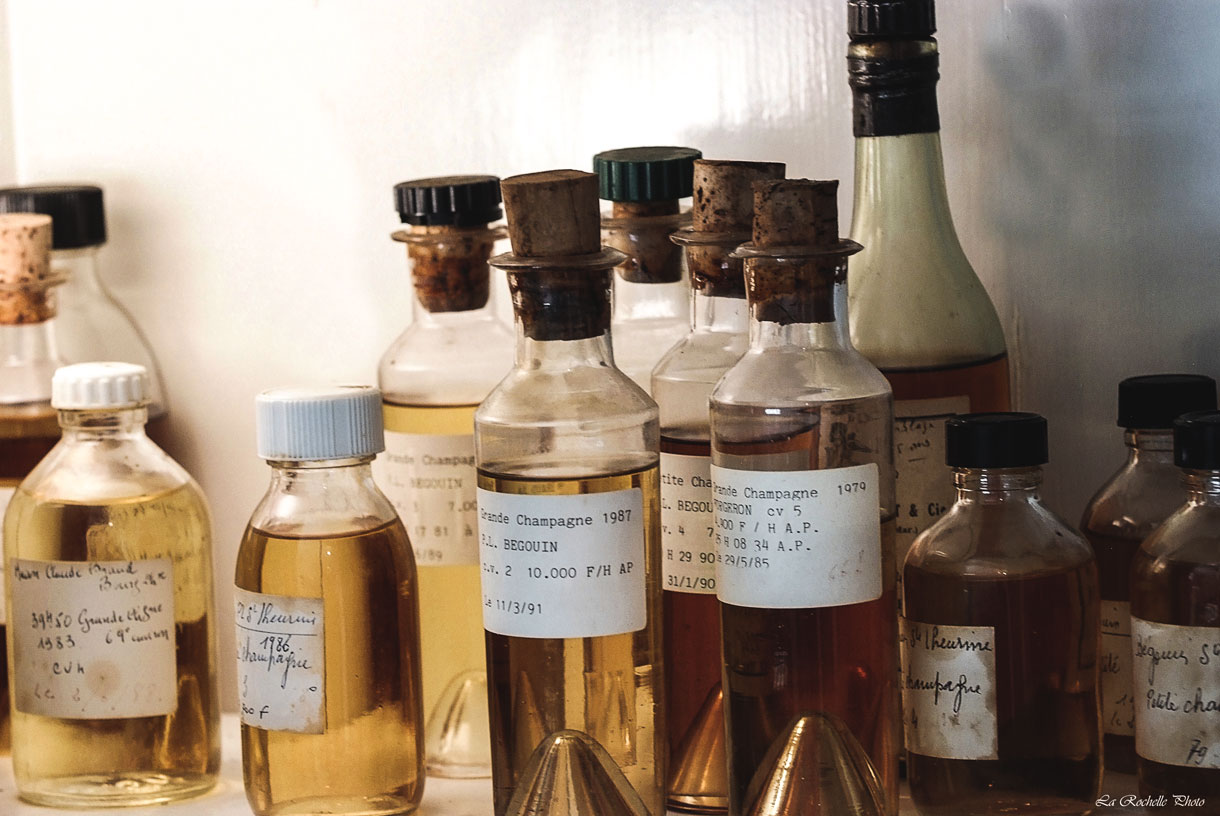
In honor of the maîtres de chais
We must again mention and honor the maîtres de chais here. We suspect that they walk through the chais and have quiet chats with the barrels and their eaux-de-vie. There are formulae written of which cru, which distillery, which year to blend or prepare for the market. They make “pattern” samples, they make “master” samples; they decide how much of which cru to blend, or how much of the same cru, but different vineyard or different age, to blend; when to cut and how to cut the alcohol content; whether to add caramel for color, or boise or sugar for taste. But, in the end, it is the maître de chai’s unique knowledge and skill that brings it all together, year after year. You can read more about the essential role of the Cellar Master here.
The following is a small list of the best, in no particular order: Alain Braastad-Delamain of Delamain, Stephane Burnez of Prunier, Francois Chapeau, formerly at Martell, Daniel Dudognon of Ragnaud-Sabourin, Marcel Ragnaud, formerly at Ragnaud-Sabourin, Daniel Dumont, formerly at Courvoisier, Jean-Mare Olivier of Courvoisier, Olivier Paultes of Frapin (today Hennessy), Jean-Marie Normandin of J. Normandin-Mercier, Jean-Paul Carnus at Carnus, Philippe Camus, formerly at Camus, Maurice Fillioux, formerly at Hennessy, Yann Fillioux of Hennessy, Jacques Rouviere at Bisquit, Henri Exshaw, formerly at Exshaw, Michel Rouyer Guillet, formerly at Rouyer-Guillet, Jacques Roullet, formerly at Denis-Mounie, Pierre Voisin, formerly at Leopold Gourmel, Robert Leaute of Remy Martin and Georges Clot, formerly at Remy Martin.
Watch a video of Master Blender, Roland Bru, at work.
This list is by no means complete. lt should also include the viticulturists and distillers who bottle their own eaux-de-vie. And, it would be a shame to exclude people like Max Cointreau, Gerald de Romefort, Bernard Hine, Bemard Lacroix, Bemard Eymard, Maurice Pinard, Patrick Brillet and others who still walk the chais and talk to their eaux-de-vie.
Cognac coloring
You can learn a lot from the color of a Cognac. But the widely held belief that Cognac age can be determined solely based on how dark its color is, isn’t necessarily so
Why is Cognac brown?
One thing that surprises many people, is that the raw component of Cognac, the distilled eau-de-vie, is actually a clear, colorless liquid. So if that’s the case, how come Cognac is brown?
Well let’s be a little more accurate when it comes to describing the color of Cognac, because in all realities it ranges from a deep mahogany brown through to a yellow straw color. And there are many different reasons as to why this is. One commonly held belief of many is that the older the Cognac, the darker the color. And whilst this holds some semblance of truth, it certainly isn’t the whole story.
So let’s set about debunking the mystery of the color of Cognac, and why Cognac is brown, once and for all.

A clear, pure spirit
As we have already discussed, there are strict regulations in place for a drink to carry the name of Cognac. One of these is the requirement of double distilling, when the wine pressed from the grapes grown in the region is heated in copper pot stills to create the product we call eau-de-vie. After this stage of the Cognac making process, the liquid is as crystal clear as freshly melted ice.
The next stage that the liquid undergoes is aging, which takes place in oak barrels over many years. As we have already mentioned, this process must take place in either Limousin or Tronçais oak barrels.
Oak = Color
Now, as we all know, wood is brown. So when the colorless eau-de-vie is placed within a barrel, slow chemical changes begin to take place. This is all part of the aging process and one such change is that the liquid gradually begins to take on a darker hue. In general, the longer the eau-de-vie remains in the barrel, the darker it will become.
That’s all quite straight forward so far, isn’t it? But now we’re going to muddy the waters somewhat, because there are most definitely some exceptions. And this is where the reasoning behind why Cognac is brown begins to get a little complicated. But bear with us, and all will become clear.
You remember that the oak barrels are toasted? Well, the heavier and more charred this toasting process is, the more color it will impart on the liquid contained within. So, you might think, aging eau-de-vie in more heavily toasted barrels would be desirable? This is not necessarily so, because such barrels cause the eau-de-vie to become more bitter in flavor, and this can take a long time to disappear. In general, the newer an oak barrel, the more color and taste its wood will give to the liquid it contains.
Because of this, many cellar masters age eau-de-vie in newer barrels for a short period of time, around 18 months or so, and then transfer to older barrels for the majority of the aging process.
Another aspect that influences the color of the Cognac is the size of the barrel. The smaller the barrel, the larger the surface area of the eau-de-vie that will come into contact with the wood. And therefore, the liquid will become darker.

Other Color Influences
There are two other main ways in which the Cellar Master can further influence the color of a Cognac. The first is by adding ‘Boise’, although it has to be stressed that the color change is not the primary reason that this additive is used. This is a traditional process whereby wood chips are boiled in water multiple times, until it becomes a dark, syrup like liquid. This can be added to a Cognac mainly to correct tannin levels, but it can also be used to darken the color of the liquid, making it browner, rather than yellow or golden. However, this method can result in the Cognac having a slightly bitter flavor, although this fades over time. Clever use of this process can lead to a more developed intensity and richness in the taste of Cognac. Although adding ‘Boise’ can have its benefits, it is a highly skilled process and one that should be undertaken with care.
Secondly, there is the addition of artificial coloring agents. The main one used by some houses is that of caramel E150a. Now, E numbers never mean anything good, right? Well if you put the quandary of adding caramel as coloring to any craft producer, you’ll be likely to get the very same response: Not in any of my Cognacs! But is it really that bad?
What exactly is this Caramel?
When this question is put to the top Cognac producers their answer is: “Caramel color is the dark brown material resulting from the carefully controlled heat treatment of food-grade carbohydrates. It is the world’s most widely used food color additive.”
So that’s as clear as mud then…
We conducted our own research into the subject to try and find a better answer and stumbled upon Sethness-Roquette, who proclaim themselves as ‘The Natural Leader in Caramel Color’.
The information on their website tells us that caramel colors are divided into four separate classes:
- E150a Class I
- E150b Class II
- E150c Class III
- E150d Class IV
When it comes to using these for the coloring of Cognac, it’s only the first - the E150a Class I - that’s utilized in the process (and, we hasten to add, not in all cases of Cognac. Most often it’s used in younger Cognacs to give them a deeper hue).
It appears that the color of this additive is a golden brown in tone, and contains no sulphite compounds or ammoniacal compounds. What it does contain is ‘acids and alkalis’. When used in a product it is proclaimed on the label as “color: plain caramel” or simply, “E150a”.
Not only is it used in Cognacs and Brandies, but also in confectionary, pet food, casing and bakery products.
According to Wikipedia, caramel color is one of the oldest known food colorings, as well as one of the most widely used. However, whilst it’s approved on a global scale, each individual country has its own varying restrictions as to its use.
How it works - in layman terms
Now, we’re not chemists. But as far as we can gather, the caramel coloring is manufactured by heating various naturally occurring sweet products. These include dextrose, fructose, molasses, sucrose and malt syrup. The resulting caramel molecules then carry either a positive or a negative charge, depending on the methods used in the creation of the coloring.
So what does this mean in terms of the Cognac I drink?
Well, it all depends on personal opinion. Caramel coloring is mainly added to younger, paler Cognacs to give them a darker color. Of course, the longer a Cognac ages, the darker it naturally becomes, so there’s not usually any reason to add color to older eaux-de-vie. However, when a young Cognac is mixed with many others to create a blend, the addition of coloring can counteract the paling effect this might have.
For the true Cognac connoisseur, the knowledge that there’s artificial coloring in your favorite tipple might well be something you’re not prepared to put up with. There are Cognacs that do not contain these and some Cognac houses will specify when their products are free from any caramel coloring.
But in general, most producers add caramels to some (or all) of their products. It’s very common to take a young VS Cognac, sweeten it up some and add caramel to enhance the color. Then, by selling it in a prestigious decanter with some gilded elements it becomes a more viable product.
In Conclusion of Cognac's color
You can learn a lot from the color of a Cognac. But the widely held belief that Cognac age can be determined solely based on how dark its color is, isn’t necessarily so. It’s all down to the skill of the Cellar Master during the aging and blending process and whether they choose to use coloring as to the eventual shade of the Cognac that reaches the bottle, and ultimately, your glass.
Cognac vs. Brandy
Cognac is unique. Whilst others might imitate, they can never replicate, that’s what makes the brandy that comes from this tiny region in France so very special. And, we have to say, long may it continue.
It’s a question that’s been asked many-a-time, “what’s the difference between Cognac and brandy?” So we’re here to give you an explanation as to why the two are different.
The first thing to understand is this: ‘all Cognac is brandy, but not all brandy is Cognac’, or to put it another way, Cognac is a specific type of brandy.
So what makes Cognac different to brandy? Well, it boils down to the following aspects:
- Cognac can only be made from grapes grown in the strictly defined Cognac region of France.
- It must be made from the juice of at least one of three particular grapes, the most common being Ugni Blanc and the other two being Folle Blanche and Colombard.
- To qualify as being Cognac, the whole creation of the drink must follow very strict production methods. These are very tightly regulated by French law (the Appellation d’Origine Controlee, or AOC).
- Cognac is twice distilled in copper stills and then aged in French oak barrels.
- The Cognac must be aged for a minimum of two years.
- There are a lot of different brandies.
- The name of Cognac is protected and with good reason.
What is brandy made from?
Brandy is a distilled spirit made from fermented fruit juice. Cognac also meets this definition but it stands out from other brandies made from grapes due to the strict rules governing where the grapes must be grown and how the spirit is then produced.
The name “brandy” comes from Dutch “brandewijn”, meaning burnt wine. And that is quite a good name, as wine is distilled for brandies and of course Cognac.
There are many types of brandy. You might have heard of Armagnac, which has many similarities to Cognac. Again it’s made in France, but this time in the Armagnac region, in Gascony. Armagnac, unlike Cognac, is single distilled and tends to be somewhat more rustic than Cognac. It’s not as well known, or as well distributed either, and there’s none of the hard push into other regions of the world that we’ve seen with Cognac. To learn more about the big wide world of brandy, check out our articles - 10 types of Brandy: All you need to know and Top 10 Best Brandy Brand Sold Worldwide.
It’s also worth giving the drink Calvados a mention, which is also made in France. True to form, it’s made in the Calvados region of Northern France, but this brandy is made from apples.
In Germany you can find Brandies referred to as Weinbrand, which is very similar to Cognac but unable to use the name due to the regulations.
Craft Brandy is having its own resurgence, especially in the US. Brands are aware of this and ready to cash in on the rise in popularity, especially as they don’t have to jump through the same hoops as with Cognac production. Read more about this here: St Rémy Craft Brandy: The niche market ploy of Rémy Cointreau.
Cognac - the clue is in the name
As we’ve already mentioned, Cognac can only be called Cognac under certain, very strict rules. The name itself adds that certain air of luxury, and as with anything that’s perceived as ‘expensive’, so there are many attempts to cash in on the name.
Armenia, for example, is a classic case of some companies in another country trying to pass off their brandy as Cognac. But the BNIC (Bureau National Interprofessional du Cognac) soon put a stop to that. And actually, Armenian brandy is perfectly good enough to make sales on its own merit, without trying to steal the identity of Cognac. And don’t even get us started on the laughable name that is ‘konyak’.

To sum up the Brandy versus Cognac debate...
Cognac can only be made in France, and in the strictly defined Cognac region. The producers have to follow extremely rigid processes that are monitored by French law. A cognac cannot be made anywhere else. So there are no Russian Cognacs, no American Cognacs, no Armenian Cognacs. There is only French Cognac - from Cognac.
Have a look at this intriguing French Brandy made in Cognac in our article: Monteru Ippon Brandy: A luxurious novelty “a la Japanese”.
So when it comes to Cognac vs. brandy, actually, it’s not that complicated at all. All Cognac is brandy, but not all brandy is Cognac.
Cognac is unique. Whilst others might imitate, they can never replicate, that’s what makes the brandy that comes from this tiny region in France so very special. And, we have to say, long may it continue.
Cognac vs. Whiskey
Many who enjoy Cognac also love Whisky. But what's the difference between the two?
Many who enjoy Cognac also love Whisky – or Whiskey – (the difference being that the extra ‘e’ in the spelling denotes Irish Whiskey, as opposed to Scottish Whisky – also referred to as simply, Scotch. But we’ll talk more about that all important ‘e’ in just a moment). And yes, many people are aware that Cognac is made from grapes, and Whiskey from grain. But the story certainly doesn’t end with the grape versus grain saga.
Before we talk about the difference between Cognac and Whiskey and Whisky, let’s mention a couple of similarities. All are fermented, and convert sugar to ethanol. They’re all aged in wooden barrels and in general the longer they age, the smoother the taste becomes.
The spirits pick up quite a lot from these wooden barrels - and this includes both color and taste. Both Scotch (Scottish Whisky) and Cognac share the method of distillation in pot stills and both are distilled at a low proof.

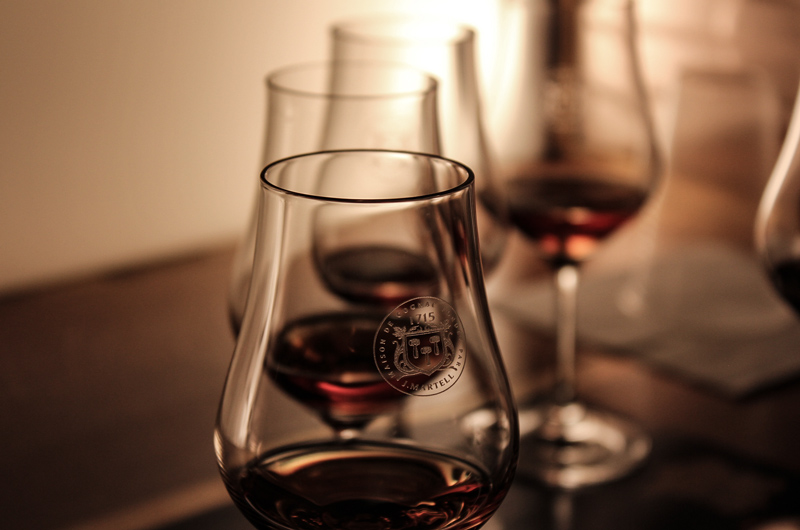
Grape versus grain
So let’s get to the crux of the matter. Because there really are some major differences between Whiskey and Cognac. It all begins with the raw materials, more than the methods and how to consume the actual product.
Whiskey is made from grain, usually barley. That is then mixed with water and yeast and is then distilled. The spirit is then aged in oak barrels.
Oh, and a little more information about that ‘e’ that you see in Whiskey, or not, as the case may be. In addition to denoting whether it comes from Scotland or Ireland, when spelled ‘Whisky’ it can also come from Japan or Canada. And when it’s Whiskey, it could also be from the US. No-one ever said that drink labels were clear cut!
As already mentioned, the raw material of Cognac is grapes – the juice of which is fermented, creating an acidic wine – perfect for Cognac production. The juice is fermented about 5 days before distilling, (Cognac undergoes a double distillation process), which creates what’s known as eau-de-vie. This is then aged over years in oak casks.


What about age? Is Cognac older than Whiskey?
Both Cognac and Whiskey are aged in casks. The youngest Cognac is referred to as a VS, or *** (3 stars). The minimum age of such a product is two years. However, some are aged for much longer than this – in some very special cases, over a hundred years.
Cognacs (and brandy) tend not to denote age by numbers. Instead, they use the terms VS (over two years old), VSOP (over four years old) and XO (over ten years old). Though many Cognacs have components that are far older than this.
While Cognac and brandy use age terms such as VS, VSOP or XO, Whiskey shows the exact age of its contents, for example 3, 5, 10, 12 or 15 years. There are also Whiskies at 18 years, but older ones are somewhat rarer.
So actually, it’s really not a clear cut answer as to which is older, Cognac or Whiskey. A 15-year-old Whiskey is older than a VS Cognac. But an XO Cognac may well have some eaux-de-vie within its blend that could legitimately be 50, 80, 90 or even 100 years old or more.
If we’re questioning which is more old school, then Cognac was traditionally seen as a digestif. A drink to enjoy after dinner, perhaps with a coffee or paired with a cigar. However, Cognac has done much to shake off the ‘stuffy old man’ image in recent years. It’s now the drink of uber-trendy hip hop stars and one that the Millennials are falling in love with. You only need to look at the new, trendy Cognacs on offer to see that the drink has had a massive surge in popularity with ‘Generation Y’. Nightclub shelves are stocked with Cognac and it now features in many a favorite cocktail (a throwback to the time, decades ago, when it was also drunk in such a fashion).
Whiskey, on the other hand, certainly didn’t fall foul of such a conservative image in recent years. Although it has to be said, it’s still a truly traditional drink. But Whiskey doesn’t seem to have suffered the fall in popularity that befell Cognac a couple of decades ago. Thankfully, the world has now rediscovered its love affair with Cognac – and about time too! Read more about the popularity of both Cognac, Whiskey and Rum around the world here: The Future of 3 Brown Liquors.
Regarding how to drink the spirits: there was a time when it would’ve been said that while you add water to a Whiskey, you’d never do that with a Cognac. Simply because the structure of each is totally different – Whiskey is grain based and Cognac is fruit based. But today, this certainly isn’t true. There’s many a Cognac that you can certainly add a drop of water to now, in order to release different flavors. The upsurge in the popularity of cask-strength Cognacs has certainly seen to that. It’s now perfectly acceptable to take your Cognac ‘on the rocks’ – in the same way as you might a Whiskey.
And hey – whether you’re drinking Whiskey or Cognac, how you enjoy it is your business. Once that glass is in your hands, it’s your drink to do whatever you want with.
Is one better than the other?
Well, that’s something that can only be decided by you. We, of course, are biased towards Cognac. But if forced, we’ll taste the occasional Whiskey (or Whisky). Strangely enough, Whiskey is actually the favorite drink of Cognac’s home-country, France and Whiskey is now produced in the Cognac region. In fact, we don’t think you have to be a ‘Cognac person’, or a ‘Whiskey person’. You can simply enjoy the best of both, which is why we’ve compiled a list of Cognacs for Whisky drinkers. There is even such a thing as Cognac-Finish Whisky now, if you fancy blurring the lines even further!
Cognac vs. Armagnac
Armagnac is (probably) the oldest wine spirit in the world. However, in complete contrast to Cognac, Armagnac remains difficult to find and is somewhat shrouded in mystery. We are going to delve into the similarities and the many differences of Cognac and Armagnac.
Armagnac is (probably) the oldest wine spirit in the world. The first written evidence of the drink was noted in 1310, scribed in Latin in the pages of a book entitled To Keep Your Health and Stay on Top Form. However, in complete contrast to Cognac, Armagnac remains difficult to find in many countries outside of France and is somewhat shrouded in mystery.
We are going to delve into the similarities and, most importantly, the many differences of Cognac and Armagnac. For while they are indeed related they can at best be considered cousins, even if they are produced only a few hundred kilometers apart.

Armagnac vs. Cognac: An overview
Before we delve into the nitty gritty of the difference between Cognac and Armagnac, let’s first determine some very important similarities.
- Both Cognac and Armagnac are types of brandy
- Both are produced in France
- Both are made from grapes
- Both are aged in oak barrels
- Both can only carry the name if they’re produced in a specific region of France and are created in accordance with a strict set of rules
We can see that the two spirits have much in common, however there’s far more distinguishing features than there are similarities. To understand these intricacies we have to look at each in more detail.
Where are they produced?
While both are produced in France, the area they each come from has some very significant differences. One very important aspect is that, although the Cognac and Armagnac regions are only geographically separated by around 300km, the soil in the two areas is very different. That of Cognac is predominantly chalk, but in Armagnac the grapes grow in quartz sand, siliceous clay, and riverbed sediment. This creates huge variety in the flavors of the grapes that grow there, and, indeed, the varieties that best flourish.
Cognac is produced in South West France, in a wide-spread location north of the city of Bordeaux that covers much of the department of the Charente, the Charente-Maritime, and some small parts of the Dordogne and Deux-Sèvres.
Armagnac is also produced in Southwest France, but in a region known as the Pays de Gascogne. This is found west of the city of Toulouse and extends between the rivers of the Adour and the Garonne, in the foothills of the Pyrenees Mountains. Although it covers an extensive landscape, there are only around 37,000 hectares of vineyards, from which around 6 million bottles of Armagnac are produced each year. (This is a drop in the ocean compared with more than 217 million bottles of Cognac produced in 2019).
Similar to the Cognac growth region, that of Armagnac is also divided into different terroirs. These number three (as opposed to Cognac’s six) and are called:
- Bas-Armagnac
- Armagnac-Ténarèze
- Haut-Armagnac
Most Armagnac is produced in Bas-Armagnac, where around 57% of all Armagnac comes from. 40% is made in Armagnac-Ténarèze and only 3% in Haut-Armagnac. Exactly the same as how the soil and climate in each Cognac terroir impacts the flavors and aromas of the eau-de-vie it produces, this is also mirrored in the individual Armagnac terroirs.

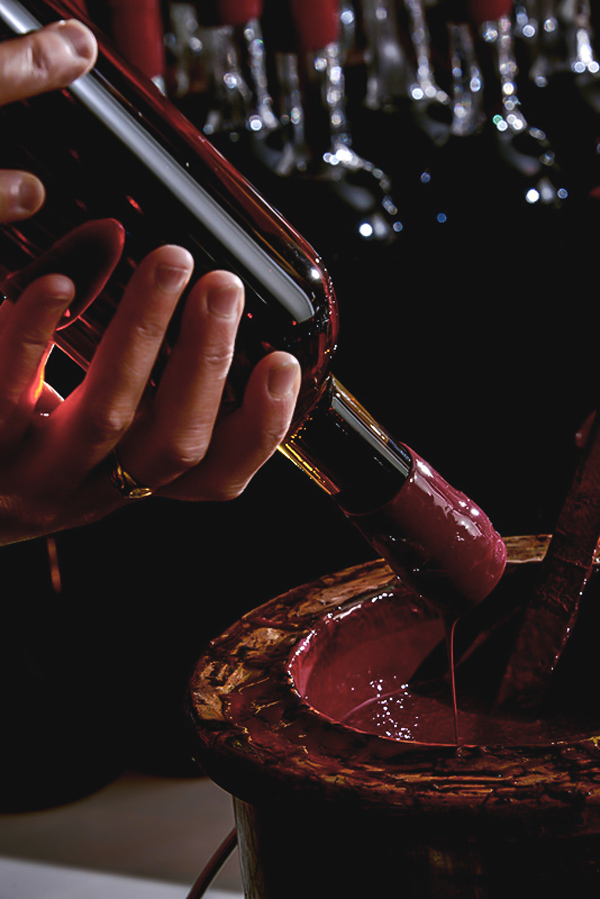
Armagnac grapes vs. Cognac grapes
When it comes to Cognac, the most common grape in use today is the Ugni Blanc. Armagnac, on the other hand, has historically utilized a wider combination of the fruit.
Only a few grape varieties are allowed to be used in the production of Armagnac. The most frequently used is Ugni Blanc, which occupies 75% of Armagnac vineyards, followed by a hybrid grape variety, Baco, which is often selected for its resistance and productivity. Used in the minority are the rarer and more fragile Colombard and Folle Blanche grapes. But actually, there are a few more grapes that are allowed. Learn more about Armagnac and its grapes.
The Armagnac production process
By far the most important aspect to understand about Armagnac production is that in 95% of cases it is only distilled a single time (Cognac is double distilled). This takes place no later than the 31st of March following the previous summer’s harvest.
The stills used to carry out the distillation are different from those used for Cognac. Rather than using the pot still, eau-de-vie destined to become Armagnac is distilled using a continuous column still, known as an Armagnac alambic. This allows the spirit to be distilled at a far lower alcohol content range than that of Cognac (52 degrees – 72.4 degrees, as opposed to a minimum of around 67 degrees). This leads to the distinctly rustic flavor of Armagnac, as well as a difference in texture. Armagnac is much thicker than Cognac—a little like vodka from the freezer has a different mouthfeel to that sipped at room temperature.
Another interesting fact is that many Armagnac producers don’t have their own stills. Instead they utilize the services of traveling alambics. These travel from producer to producer, with many of them still using wood fires to produce the heat needed for the process.
The distillation process is cause for much celebration for the farms and local communities. From the end of October to the end of January (when most distillation takes place) is known as La Flamme de L’Armagnac, a time of a variety of festivals and events throughout the whole Armagnac region.

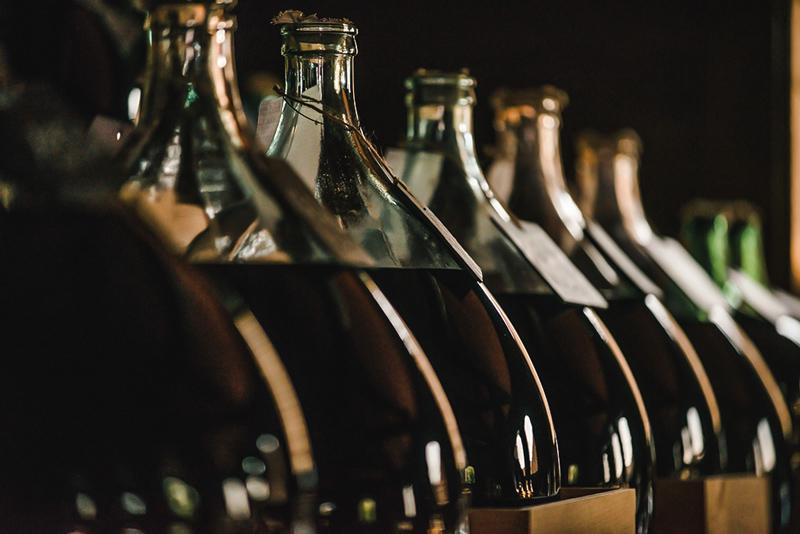
Barrels, Maturation and Aeration
Cognac is, for the most part, aged in Limousin oak barrels. Armagnac also languishes in barrels, but there are significant differences that should be noted.
Typically it begins the process in new barrels for anywhere from six months to two years. These barrels are usually 400 liters in size. After this relatively short period the eau-de-vie is transferred into older barrels. This is done to prevent tannins and the wood extract of the new barrels from dominating the finished product.
Similar to Cognac, the favored oak is that from the Limousin or Troncais forests. However, some producers choose to use black oak from the Gascon region. While brandies aged in these barrels become very intense and fruity, a diminishing supply of the wood means the use is becoming less common.
The process of aeration is something that doesn’t happen during the Cognac process. Armagnac producers often move the spirit during maturation. This involves emptying it into a tank and pumping it back into either the same barrel or a different one. This could be an even older barrel, done to reduce the amount of tannins being imparted into the liquid. If the producer considers the brandy to be too aggressive then water might also be added at this time.
Once the aging process is complete it’s common for Armagnac to be transferred from the barrel into Dame Jeanne/Demijohn glass bottles, or even steel tanks.
The legalities
Both Armagnac and Cognac have strict rules as to where they’re produced, the distillation process, and other legalities. Both were granted AOC status in 1936 (Appellation d’Origine Contrôlée), which gives both brandies the legal right to the sole use of their respective names.
The BNIC is the ruling body for Cognac (Bureau National Interprofessionnel du Cognac) and for Armagnac it’s the BNIA (Bureau National Interprofessionnel de l’Armagnac).
Age classifications
The classifications used to describe the age of Armagnacs are similar to those of Cognac, but they have distinct differences. The classifications and meanings for Armagnac are:
- A VS or ***: Has been aged for a minimum of one year
- VSOP: Aged for a minimum of four years
- Napoleon & XO: Aged for a minimum of six years
- Hors d’Age: Aged for a minimum of 10 years
- Vintage: Aged for a minimum of 10 years and will have the year of the harvest displayed on the label
It’s very common for Armagnacs to be of a particular vintage—much more so than that of Cognac.
Sales and Marketing: a world apart
Another key factor in the Cognac vs Armagnac difference debate is the way that each product has been marketed. Cognac, as you’re undoubtedly aware, has massive global appeal. Much of this is due to the might of big house advertising, such as that from Hennessy, Remy Martin, Martell, and Courvoisier. The mid-sized houses also advertise aggressively, pushing their wares into countries all around the globe.
The world of Armagnac is very different. There are no major houses, no multi-million dollar marketing budgets, and certainly no industrial-level production. The largest of all Armagnac houses is Maison Janneau, based in the town of Condom in the Gers. Other brands of note include Chateau de Tariquet, Duc Moisans, and Chateau de Laubade.
While Armagnac isn’t commonly found in many other countries it is exported—mainly to China and Russia. Around 50% of the spirit is kept for local and national enjoyment, as opposed to that of Cognac, where 95% is exported.
Does Armagnac taste different to Cognac?
The resounding answer to this is yes. While they are both brandies, the different soils, distillation, and production processes instill a very different character into each drink. The small scale production of Armagnac means that there are dramatic variations from one distiller to another—even in those who might have neighboring vines.
The best way to describe the nuances of Armagnac is that it’s bold, complex, and robust–with a spectrum of aromas and flavors that range from light through to the heaviest of chocolate and dark fruit tones. It feels thicker on the mouth than Cognac and pairs very well with the rich foods of the region (duck, truffles, foie gras, etc.).
Armagnac and Cognac both share genetic similarities but certainly don’t offer the same tasting experience. The only way to discover the wonderful nuances of the spirit is to try it—and it’s something we highly recommend.
How to buy Armagnac when you don't live in France
Armagnac is typically challenging to purchase for those living outside of the Pays de Gascogne region of South West France, However, at Cognac Expert we are delighted to be able to ship a hand-picked selection to you, whatever country you reside in.
Find out more on our dedicated Armagnac, where you can further discover intricacies about the spirit and purchase a bottle or two for your own home taste-test.
FAQs
Cognac is made from grapes, predominantly of the Ugni Blanc variety. The fermented juice of the grapes is double distilled in copper stills to produce eau-de-vie which is then aged in French oak to produce Cognac.
All Cognac is brandy, but not all brandy is Cognac. Cognac is a specific type of brandy that has been produced under very strict rules, one of which is that it must be made in the Cognac region of France.
No, Cognac is made from grapes and Whiskey is made from grain. They are both aged in wooden barrels though.
A traditionally shaped copper pot still, also known as "Alambic Charentais". It consists of three elements: chaudiere (boiler), chapiteau (condenser) and chauffe-vin (wine-warmer). The design and dimensions of the pot stills are legally controlled.
Wine, pressed from either Ugni Blanc, Folle Blanche or Colombard grapes. A great majority of Cognac producers also add any of the four, legally allowed, elements: distilled water, oak (boise), sugar and caramel.
Yes, but not the type of wine you would like to drink. To make a good quality Cognac you need sour, acidic wine to preserve the wonderful aromas and flavors of the grapes that are so important for making Cognac.
No, Cognac is on average more expensive than Armagnac. However, it all depends on which brand and product you purchase.